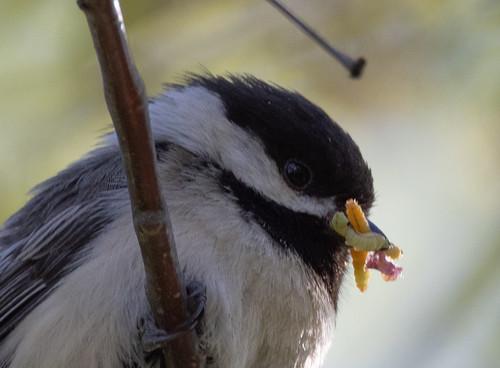In the coming weeks, I’m going to produce several “For the Birds” programs and blog posts about improving backyard habitat. But before anyone should set up bird feeders or add plants to attract birds, we must ensure that we’re not luring them to death traps. Two backyard bird killers each take out on the order of a billion birds in the United States every year—cats and windows.
When Russ and I were first married in 1972, I came upon a homeless cat sitting in a tree—he wasn’t wearing clothes, and when I came to know him, I realized he did not like following rules, so I named him Yossarian. This was before I started birding, but I didn’t need to know much about birds to know that cats kill them, and that outdoor cats, being subsidized by humans, can survive quite handily even when prey populations shrink so that natural predators would have to move on or die out. So Yossarian spent the rest of his life as an indoor cat, as did 5 other outdoor cats we took in over our lives.
When we moved to Duluth, a few cats prowled my neighborhood. Our dog kept them out of our yard, but on several mornings during a warbler fallout in 1991, my son Tommy and I found scores of dead warblers littering a sidewalk on our walk to kindergarten. One day when I couldn’t take it anymore, I picked up all the dead birds and deposited them in a big pile on the cat’s owners’ porch with a note explaining that if I ever saw that cat outside again, I’d take it directly to the pound.
Outdoor cats are the number one carrier of rabies among domestic animals. And every cat that feeds on, or even just toys with, rodents or birds can spread toxoplasmosis, which is exceptionally dangerous for pregnant women and their unborn babies, newborns, toddlers, and the elderly. Outdoor cats use flowerbeds and children’s sandboxes as litter boxes, putting gardeners and tiny children at risk.
When Russ and I visited Jekyll Island in Georgia a few years ago, one feral cat on a railing along a narrow boardwalk to the beach reached out to scratch me—I was walking tightly against the other side to avoid it, and its claw snagged my shirt rather than skin. A small child whose face was at my arm level could have been hurt badly. Feral cats are dangerous.
For decades, people have been touting “trap, neuter, release” programs for feral cats, assuring us that this provides a check on feral cat numbers, but there is absolutely no evidence that this is true despite how many decades these programs have been in existence. Outdoor cats who do have homes also take a huge toll, even the ones whose owners insist that their cat is too lazy or old to hurt birds or that their cat focuses entirely on mice, not birds.
Wherever excellent bird habitat exists, from small backyards to large swaths of public land, predators follow. A pair of Merlins nest somewhere in the neighborhood just about every year. Most winters, a hawk, Merlin, or shrike spends a few weeks hunting in my neck of the woods. And I live right under Hawk Ridge, a major raptor flyway. I’m always distressed when one of these predators takes out one of my little birds. Then again, I was pretty upset when a monarch I’d raised from a caterpillar was drying its newly opening wings and a chickadee took a triangular bite out of one. When we think at all about the caterpillars and other insects our treasured backyard birds take out, we don’t seem to extend much sympathy toward them.
But predation is natural whether the victim is a grub or a bird. And natural predators simply cannot afford to eliminate all the prey where they live or they’ll eventually starve or move away. That is the difference between natural predators and outdoor cats—thanks to people feeding them, cats are subsidized killers who get by just fine even as they kill far too many local birds.
To responsibly invite birds to our yards, we obviously must keep our own pet cats indoors, but we should also consider how safe our yard is from feral and stray cats in our neighborhoods. With so many strident, well-funded cat defenders organizing now, encouraging city councils to pass a cat leash ordinance is even harder today than it was when Duluth did it in 2000. Our own hard work can only be successful when we partner with individuals and groups concerned about birds, the environment, and human health and safety. That kind of endeavor is not for everyone, but at least make sure your own yard is as safe as possible before issuing invitations to birds to come visit.




